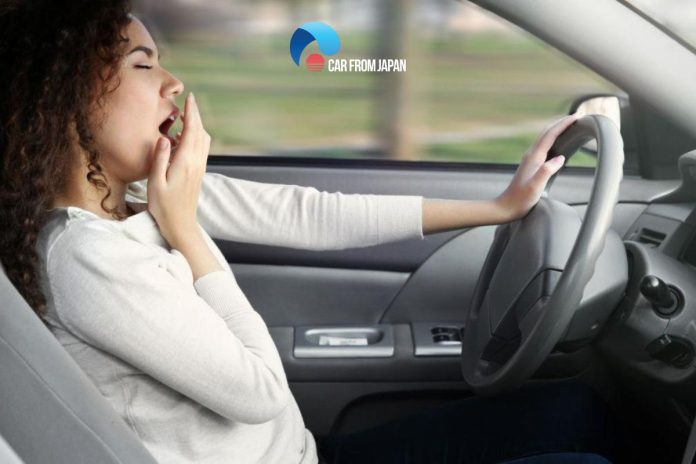According to the AAA Foundation for Traffic Safety, each year in the US alone, drowsy driving accounts for some 328,000 crashes, of which about 6,400 are fatal while 109,000 resulted in an injury.
You might previously thought it’s not a big issue, however studies have found that drowsiness is as dangerous as drunk driving. Thus, knowing how to stay awake while driving might be more important than you think.
Avoid falling asleep while driving at night or while driving long distances, which is pretty common, require strategies, preparation and tools.
Read on to pocket the most handy tips for staying awake while driving, including when to stop driving and what to do when you start to feel sleepy behind the wheels.
Contents
- Dangers of Drowsy Driving
- How To Stay Awake While Driving?
- When To Stop Driving If You’re Too Drowsie?
- What To Do When You Feel Sleepy While Driving?
- FAQs on Staying Awake While Driving
- Is it true that cold air in the cabin keeps you awake better than warm air?
- Why do some people get more tired after drinking coffee while driving?
- Can wearing blue light glasses help keep me more alert at night?
- Why does driving with the window open help more than blasting music sometimes?
- Can short naps be dangerous if not timed right during road trips?
- Final Words
Dangers of Drowsy Driving
Studies have found that drowsy driving causes similar impairments to drivers compared to drunk driving. While drunk driving causes some 11,000 deaths annually in the US, drowsy driving is not far behind with around 6,400 fatal crashes.
The first step in knowing how to stay awake while driving is actually being aware of the danger associated with drowsy driving.
Remember that this silly-sounding cause is the culprit of thousands of deaths every year, and don’t underestimate the importance of staying awake while driving.
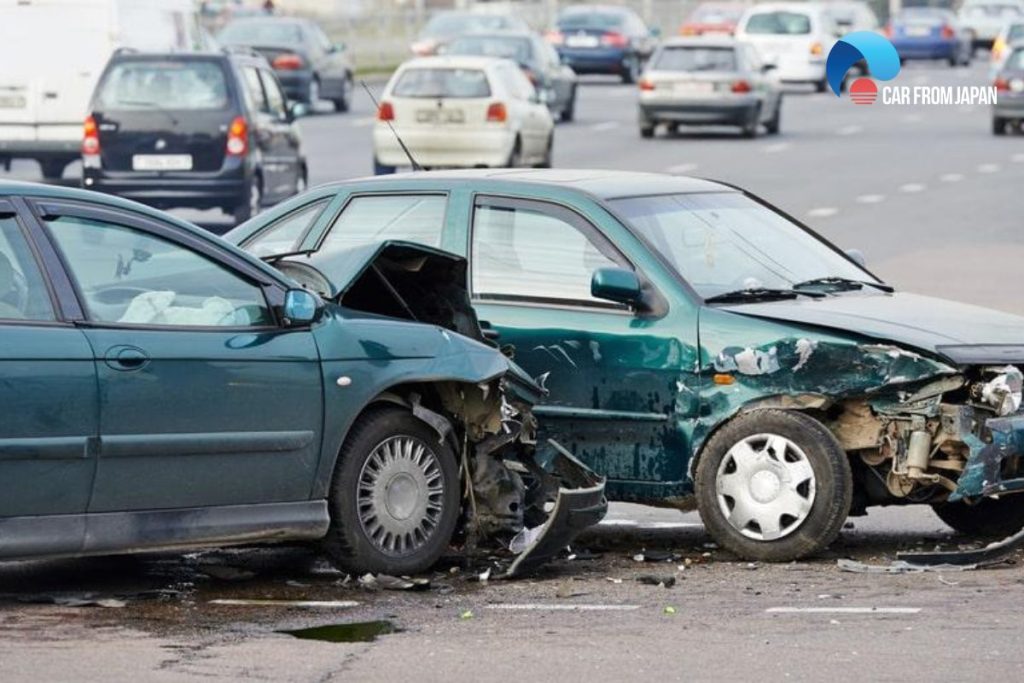
According to the National Sleep Foundation, about 50% of adult drivers in the US admit that they would drive despite feeling sleepy.
More than 40% admitting this has happened at least once since they started to drive. It’s more common than you would think.
Like drunk driving, drowsy driving causes impairment to sleepy drivers with regards to eyesight, ability to assess speed and distance, reaction time to sounds, lights and motions, blood pressure and heart rate.
If you find yourself constantly falling asleep behind the wheels to an abnormal extent, you should consult your doctor to make sure the cause of this condition is not some illness, such as sleep apnea.
How To Stay Awake While Driving?
Avoid driving at night
At night, especially late at night, your body clock automatically makes your whole body and brain go into the “sleep/rest” mode.
You will not be as alert as during the day, thus avoid driving late. If you have to get somewhere, take a cab or Lyft and Uber.
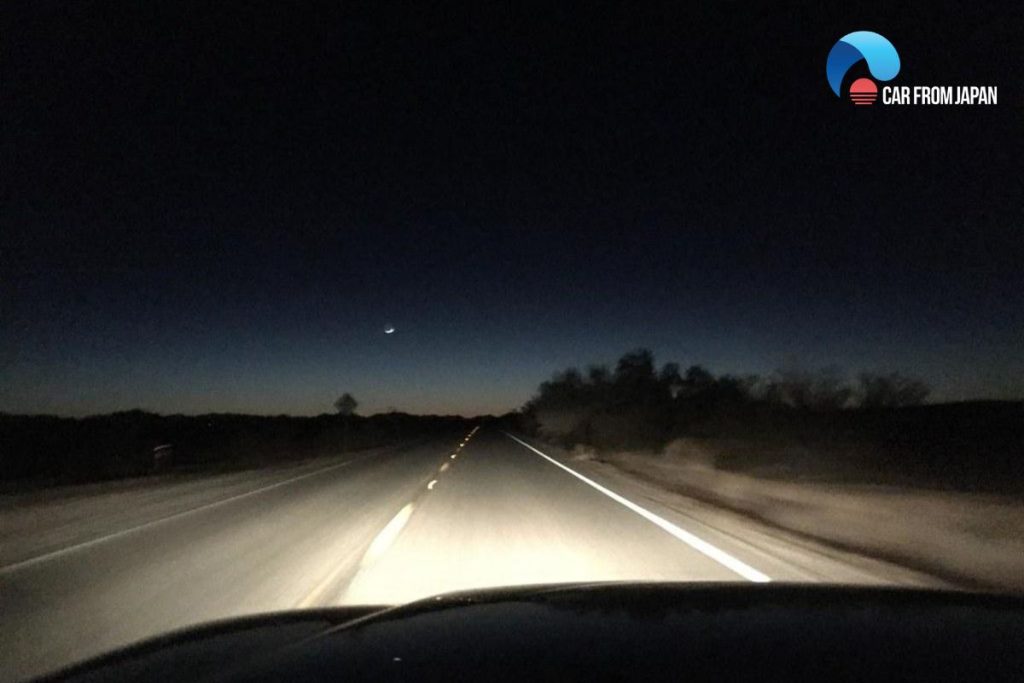
READ MORE: Night Driving Tips For Ensuring Safety In The Dark
Take a short nap before driving
The best way to stay awake while driving is good preparation, that is having enough sleep the night before a long trip or if this is not possible, try to take a short nap at least before the drive.
Studies have found that even a 15 to 30-minute nap can put you into REM mode, which is sufficient to keep you awake, alert and also more relaxed while driving.
Put on some music
This method is simple but effective. Find some tunes you’re familiar with that’s not too sad, too heavy or loud which makes you feel lively and uplifted.
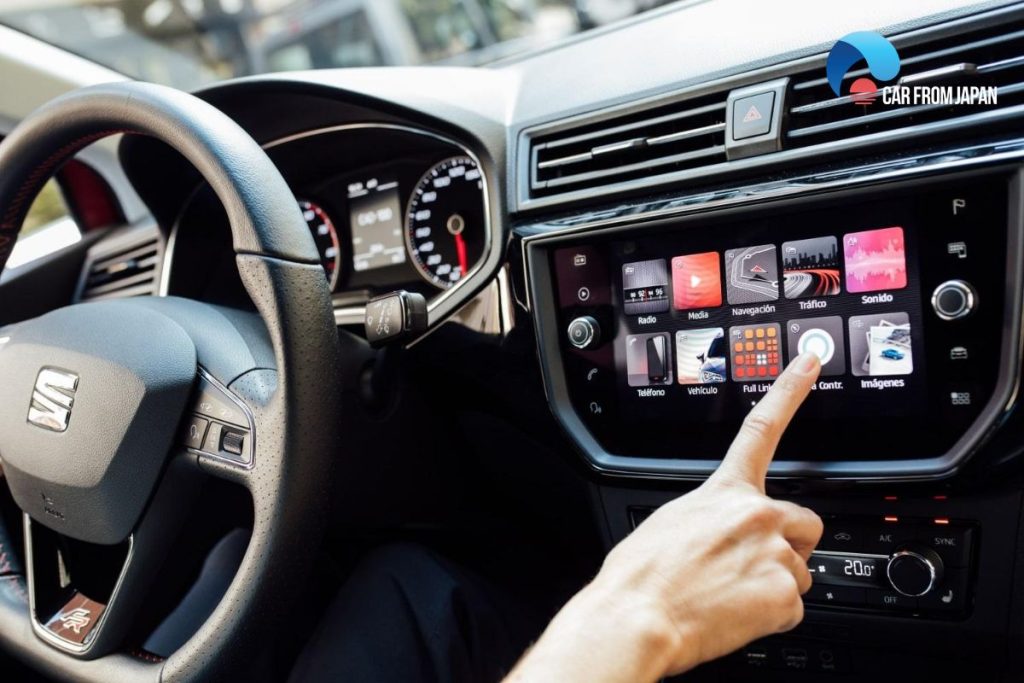
Have a companion
Casually chatting with your companion works wonders on avoiding falling asleep while driving.
This is not enough to distract you from your paying attention to your surroundings and controlling your car, however will require some effort from your brain to keep the conversation going.
In other words, making your brain work will in a way make it forget that it’s sleepy. In addition, having passengers in your car will increase your awareness of responsibility, thus will help you to drive more cautiously and safely.

Have some caffeine
Studies have found that even just one cup of caffeine can significantly reduce your chances of falling asleep while driving and reduce the likelihood of crashes during long drives.
Have some before you go, or stop over a convenience store or gas station to sip some coffee and stretch your legs a bit.
Have some snacks
Similar to how chewing some chewing gum while being stressed out can effectively recover your heart rate and blood pressure, preparing some snacks beforehand to munch on the road can distract your brain and make it temporarily forget the drowsiness.
When To Stop Driving If You’re Too Drowsie?
Knowing how to stay awake while driving is not enough. Knowing when to stop driving is just as important. Remember, it’s far better to reach your destination late than not arriving there at all.
If you have one or more of these signs, you should stop driving as soon as possible to get some caffeine or something to make you feel more refreshed and alert:
- You yawn frequently and uncontrollably. This alone might not be too alarming but if on top of this, you start to “nod off” or cannot keep your head up, you should stop driving immediately.
- Your eyelids feel so heavy you have to try hard to open your eyes.
- You cannot focus on what’s happening in front of and around you. Your mind is constantly wandering, or you have no memory of driving during the last few miles.
- You drive erratically. You miss road signs and turns, you suddenly realize that you’ve driven over a rumble strip or suddenly find yourself in the wrong lane.
What To Do When You Feel Sleepy While Driving?
If you have the above symptoms, do not carry on driving. Pull over at the nearest possible stop or gas station to wash your face, have some coffee or refreshing cold drinks and grab some snacks to munch on the way.
Most importantly, get some fresh air outside and stretch your legs, or better yet, sprint. Some physical activities will increase your blood flow to your brain, making you feel more awake and refreshed.
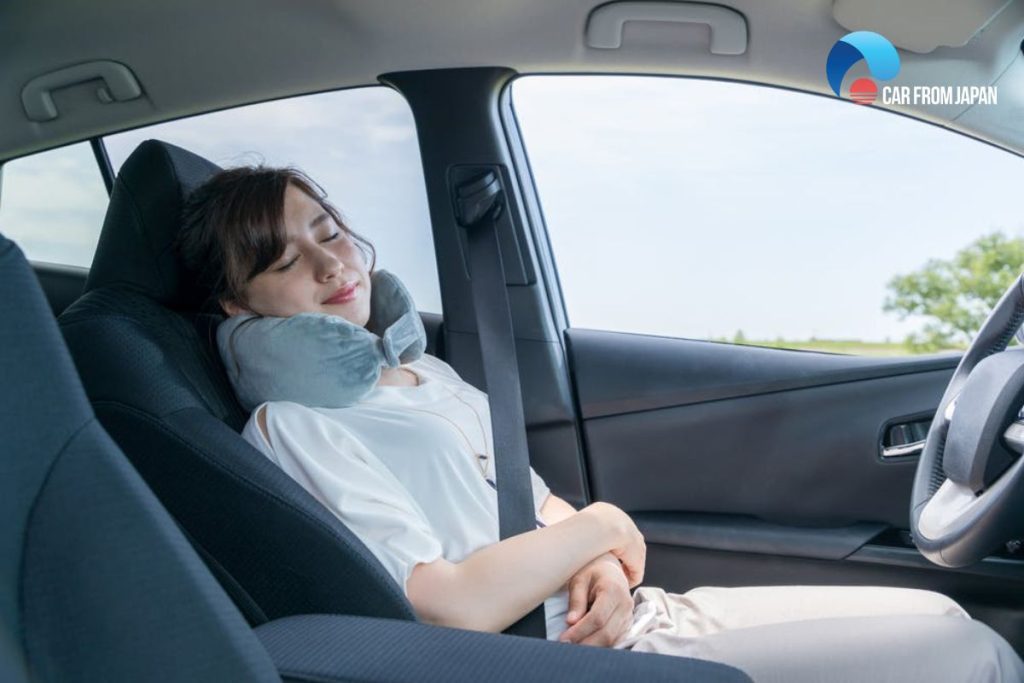
If you can, pull over somewhere quiet and get a short 30 minute nap. This can be a life saver.
FAQs on Staying Awake While Driving
Is it true that cold air in the cabin keeps you awake better than warm air?
Yes. Cooler temperatures increase mental alertness, while warmth and comfort can lull you into a sleepier state, especially during long night drives.
Why do some people get more tired after drinking coffee while driving?
Caffeine crashes can hit hard after a quick spike. Also, if you’re already sleep-deprived, caffeine can only mask fatigue temporarily.
Can wearing blue light glasses help keep me more alert at night?
Surprisingly, no. Those are for blocking blue light to help you sleep.
At night, exposing yourself to blue light (like a bright screen or light therapy device) can help trick your brain into staying awake.
Why does driving with the window open help more than blasting music sometimes?
The combination of cold air and sudden noise or wind variation activates the nervous system and provides environmental stimulation.
Can short naps be dangerous if not timed right during road trips?
Yes. Waking from a nap in deep sleep (longer than 30 mins) can cause sleep inertia, making you groggier than before.
15–25 minute power naps are safest and most effective!
Final Words
The key takeaway here is that drowsy driving is no less dangerous than drunk driving, the consequences of which is dire. Equip yourself with these handy tips to know how to stay awake while driving, pull over and get some rest on the way.
If you’re severely sleep deprived and you think you should not drive on a particular day, it’s best to consider other transportation modes like buses, taxis, Lyft and Uber, or work from home that day.
Make sure you drive cautiously, especially when feeling drowsy, by consulting these top 5 defensive driving tips.

